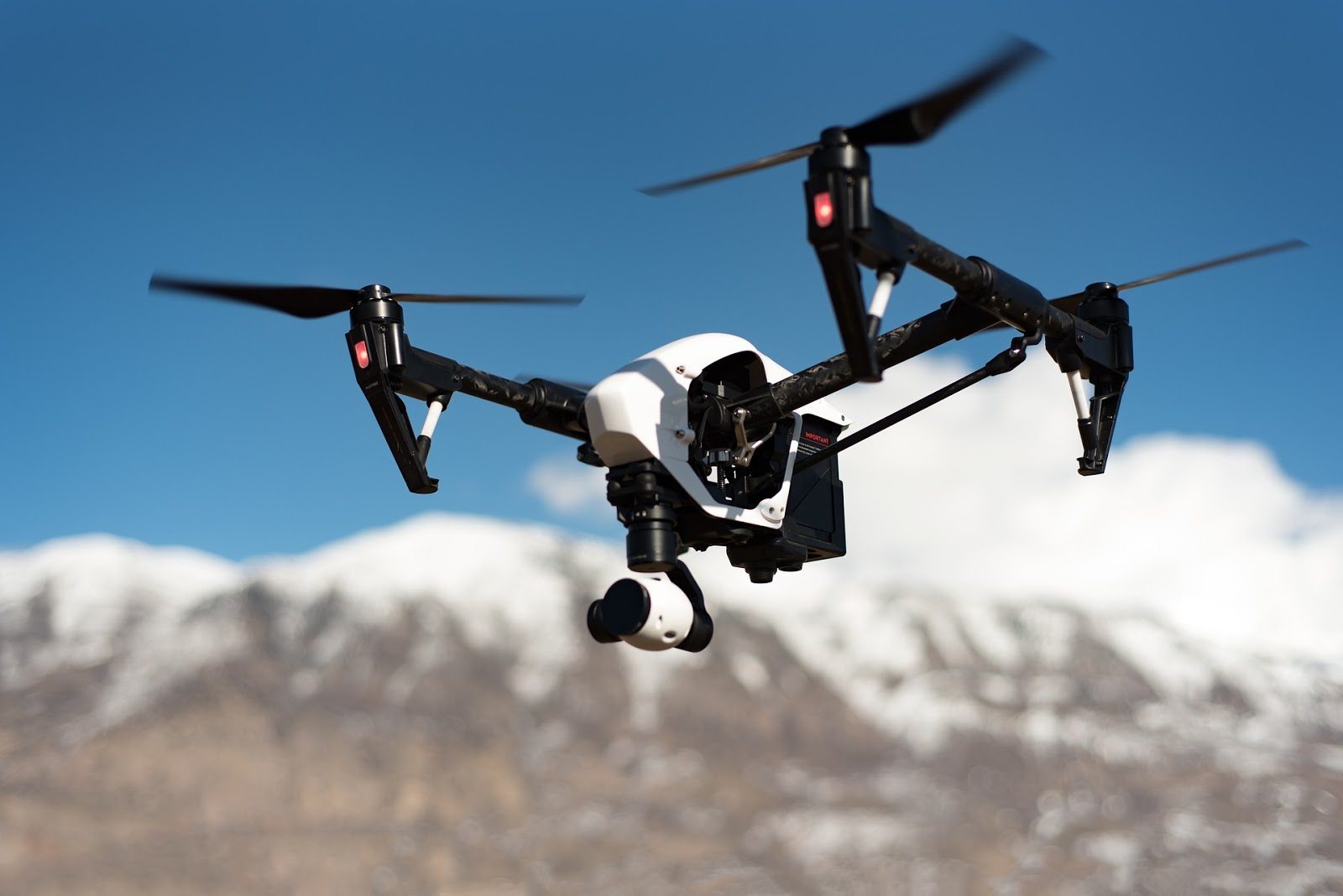To give this intro a topical slant, consider COVID-19, the illness caused by coronavirus; the focus of early 2020 headlines since it began its slow spread worldwide.
The originating location of the virus, China has used a variety of emerging technologies in a bid to stop its transmission. These include robots which disinfect, smart helmets, thermal camera-equipped drones, and advanced facial recognition software, all of which have been instrumental in fighting the outbreak.
The point is – even if China’s relationship with facial recognition software is a bone of contention with human rights advocates, due to their overuse of biometric data – emerging tech isn’t necessarily a bad thing.
Emerging communication technologies can range from the obvious, such as smartphones and social media, to less commonplace or invisible examples like drones or voice recognition software. Though improving quickly, most bring up a number of ethical issues upon their release to the general public.
Here we will delve into the pros and cons of various emerging communication technologies, as well as looking at ethical dilemmas and what can be expected in future.
The Rapid Progression of Communication Technologies
Communication technologies have exploded in the last three to four decades, enabling the average person to contact others around the globe quickly, easily, and cheaply. Our ancestors would probably have interpreted it as a form of magic, such is the rate of progression from postal services, carrier pigeons, and other traditional methods.
You only have to look back to the 1980s or the early 1990s to appreciate the rapid pace of progress. When I was a kid, meeting friends would usually be planned in person, in hopes that they bothered to turn up near the time you’d specified. Home landlines were an option, but public phone boxes were the only choice after leaving the house. This seems almost quaint, and demonstrates the usefulness of modern alternatives.
By the mid 2000s, almost everyone in the UK had a mobile phone, with figures backing up anecdotal evidence:
“Currently, approximately 95 percent of households in the United Kingdom (UK) own a mobile phone, a figure that has remained constant since 2015. That sits in stark contrast with 2000-2001, when less than half of all households in the UK reported owning a mobile telephone.”
The Office for National Statistics saw similar numbers when assessing internet usage in 2018. They found that “of all adults aged 16 to 74 years, 95% were recent internet users.”
The way we communicate has also changed. Older forms are becoming obsolete, both personally and in the workplace. For example, though most people still email, traditional mail is often perceived to be too slow. Some people are difficult to contact by phone, whereas instant messaging allows time to think and give a measured response.
Though changes haven’t always been positive, it seems there’s no stopping the progression of communication technologies.
What is “Emerging Technology”?
By definition, emerging technologies are new, innovative, and still in development, but expected to have a large socioeconomic impact. Communication tech will usually allow the user to share info or news, but need not be instantaneous. While that handles the basics, it’s still a relatively vague explanation which doesn’t cover all bases.
Experts trying to identify exactly what emerging tech is settled for:
“A relatively fast growing and radically novel technology characterised by a certain degree of coherence persisting over time and with the potential to exert a considerable impact on the socioeconomic domain(s) which is observed in terms of the composition of actors, institutions and the patterns of interactions among those, along with the associated knowledge production processes. Its most prominent impact, however, lies in the future and so in the emergence phase is still somewhat uncertain and ambiguous”.
Despite being wordy, it’s worth noting that emerging tech is defined by the uncertain nature of the future, making it hard to estimate the real impact of its possible effects.
Types of Emerging Communication Technologies
In light of the above, here are some of the most important emerging communication technologies in 2020, including relevant information and foreseeable pros and cons for each:
5G Connections

Despite Kevin Bacon’s best efforts, 5G is still viewed with some suspicion due to worries regarding radiation from mast and tower antennae. In comparison to older cellular technologies, 5G uses higher frequencies, allowing more devices simultaneous access to the internet at much faster speeds. Think entire Netflix series downloading in seconds.
Concerns stem from the idea that electromagnetic radiation may cause certain types of cancer, or otherwise prove harmful through extended exposure. In reality, despite the column inches, there’s no proof that 5G poses any health risks.
The European Commission released a report in 2015 stating: “The results of current scientific research show that there are no evident adverse health effects if exposure remains below the levels set by current standards.” In turn, the UK government has ensured that “exposure measurements have been made at publicly accessible locations near to base stations, and these have consistently been well within guidelines”.
As you might expect, 6G is on the horizon – though it’s not currently functional, and could take over a decade to be rolled out. Theoretically offering ridiculous speeds to power the latest forms of AI, it’s likely to enhance all available smart technologies, and will likely only improve over time.
Pros:
- Faster mobile internet is the main benefit of greater bandwidth.
- Online devices will have greater functionality.
- Increased numbers of 5G radio transmitters mean they can run at lower power levels compared to 4G. This should lead to less radiation exposure.
Cons:
- 5G has a shorter reach compared to older versions. This will lead to an increase in the number of towers, to ensure users’ ability to connect.
- There’s a limited amount of space in the radio spectrum which the internet is transmitted through. 5G will cause further crowding, which has the potential to lead to problems in future.
- Meteorologists have warned that 5G networks could potentially interfere with weather forecasts, making them less accurate – a factor hard to overlook in a climate crisis.
Smartphones and Digital Waste
There’s no denying that smartphones can have both a positive and negative impact on the average user. We’ve already discussed the human cost of our smartphones in-depth, while digital waste is another growing concern worldwide. More of a byproduct than an “emerging communication technology”, we’ve yet to perfect a method for fixing and recycling the items we have so quickly grown to find indispensable.
The World Economic Forum found that e-waste is the fastest-growing waste stream in the world, estimating that it “reached 48.5 million tonnes in 2018”. They also point out that only 20% of e-waste is dealt with appropriately, with “little data on what happens to the rest, which for the most part ends up in landfill, or is disposed of by informal workers in poor conditions. Yet e-waste is worth at least $62.5 billion annually, which is more than the gross domestic product (GDP) of most countries.”
It’s a ridiculous amount of money, yet it’s likely to increase in future.
Pros:
- The entirety of human knowledge at your fingertips… as long as you have a stable internet connection. It’s also hard to get lost with a 4G smartphone map.
- It’s possible to get in contact with almost anyone via a simple phone call.
Cons:
- Ethical smartphone options are few and far between, despite the market for them.
- The overuse of mobile devices has been linked to everything from online gambling to depression.
- A dependency on satellites and GPS is a worrying trend with more implications than commonly considered.
Wearable Tech

A few weeks ago, a friend told me he had recently decided to put his smartphone aside after 9pm. Taking this cue, I flipped my phone over on the table, so as to be free from distractions for the next half-hour or so.
Of course, I’d forgotten about my smartwatch, which chirped unerringly to remind me of every passing notification. Twice. I subsequently changed its notification settings, but this got me thinking about how quickly I’d become used to being pinged.
Smart devices offer a host of additional features by comparison to traditional tech, with phones, watches, and glasses being obvious examples. Some can be exceedingly positive, such as the case of Skylar Joslin, whose Apple Watch showed a heart rate of over 190, leading to doctors eventually diagnosing rare heart condition supraventricular tachycardia. Smart hearing aids are an equally impressive invention, building on the concept of assistive technology.
On the other hand, these devices are a privacy nightmare, since wearables’ manufacturers demand so much data about your body. The potential for targeted advertising is another unavoidable issue, as is the question of whether large tech companies can be trusted in an era where seemingly no company is truly safe from data breaches. This is worth considering, especially as wearable tech will inevitably become more invasive, with an expectation of growth in popularity over the next decade or so as the hardware continues to improve, and 5G improves connection speeds.
Pros:
- Wearable tech can save lives with features like heart-rate monitors.
- They’re currently helpful for tasks like exercising.
- Reasonably inexpensive.
Cons:
- In 2017, Germany announced a ban on sales of children’s smart watches, the main reason being that the devices can potentially be monitored by hackers. More generally, physical play is preferable, and many sustainable kids’ toys have nothing to do with technology.
- Concerns regarding privacy and collection of user data.
Smart Speakers
Smart speakers have long been seen as a potential privacy concern, and not just because of companies recording data. Integrated virtual assistants are quickly becoming part of daily life, and are improving every year.
In 2019, the Centre for Data Ethics and Innovation (CDEI) produced a detailed report on smart speaker and voice assistant use in the UK. They estimate that one in five homes has a smart speaker, and conclude that “speakers and voice assistants look set to have a disruptive effect on the way people interact with and control technology”.
Though conceding that most developers support ethical innovation, they state that, “most importantly, understanding what happens to data collected by voice assistants is not easy. Developers could be less opaque and consider ways to communicate better with consumers.” This is especially true of data used to improve companies’ services.
Pros:
- Smart speakers have the potential to open up new capabilities for users with disabilities.
- Extremely handy for simple day-to-day tasks.
Cons:
- Another emerging technology that comes with multiple privacy concerns.
- The use of data isn’t always clear to the average user.
Artificial Intelligence

In producing a report on the ethical implications of emerging tech, the World Economic Forum concluded that:
“More intuitive, emergent AI could change speech and conversational software with unprecedented precision, helping millions of people and also redefining the way we command and interact with computers.”
While AI is generally seen as futuristic, it’s clear that we’re slowly becoming reliant on algorithms in many different facets of daily life; everything from the news on our phones to the search results we see on the web is dictated by basic algorithms.
Google freely admits that personal information “such as your location, past Search history and Search settings all help us to tailor your results to what is most useful and relevant for you in that moment.” They give the following example: “If you’re in Bristol and you search ‘football’, Google will most likely show you results about English football and Bristol City first. Whereas if you search ‘football’ in London, Google will rank results about football and the Premier League higher.”
Many current forms of AI include a group of algorithms that can modify and create further algorithms in response to data. It’s no coincidence that John Giannandrea, former head of AI at Google, took over Search in 2016, deploying deep learning systems to help with user queries. Who knows how sophisticated these systems will be after a couple of decades’ refinement?
For now, the systems in place seem fairly basic – yet still do a fair job of selling products and giving us the results we require. We’re still a way off of I, Robot, but it seems we’re getting closer to decent AI.
Pros:
- AI could eventually change the way we use computers. Consider algorithms – which will continue to improve in coming years – shaping the websites we visit and our online behaviours. Automated systems will also be improved in comparison to current options.
- Compared to human error, AI will be far more efficient.
- A self-driving car would use AI to move and navigate, with potential for various other practical uses should the technology be perfected.
Cons:
- Job losses are expected when AI begins to displace low-skilled workers.
- Cost of implementation will be high, especially during early stages of release.
Drones

It’s easy to see why drones are seen both positively and negatively. Their use in combat has been highly criticised, having been deployed by the US since the events of 9/11. Smaller commercial drones have slowly become popular with the public at large, and have a number of practical uses.
A 2015 Scientific American article looked at the many ethical implications of emerging tech, highlighting the potential future of drones as hardware and software improves:
“Mimicking the intricacies of the human brain, a neuro-inspired computer would work in a fashion similar to the way neurons and synapses communicate. It could potentially learn or develop memory. This would imply that, for instance, a drone equipped with a neuromorphic chip would be better at surveillance, remembering or recognizing new elements in its environment.”
Intelligent, unmanned drones sound like a dystopian nightmare, but they’re probably more likely to be used for automated deliveries when coupled with improved AI and 5G.
It’s tempting to see drones as either improved kites for enthusiasts, or impersonal deadly weapons. The Economist noted that military drones accounted “for the vast majority (nearly 90%) of worldwide spending on drones” in 2017 – but the extreme production cost must be factored into this assessment. The US government states that the “cost of producing a military drone ranges from $100,000 to hundreds of millions of dollars. Over the next decade, the Pentagon plans to spend $40 billion on medium-to-large sized drones.”
Commercial units will never match the spending power of the US military, but will continue to be used for everything from racing to filmmaking.
Pros:
- Lots of commercial applications, such as delivery or security.
- Can be automated to perform simple tasks.
- Useful during disaster relief, as they can quickly reach places that humans can’t.
Cons:
- Privately-owned drones can be used to spy on others, while unmarked models clearly make the public nervous.
- Imagine a future in which the sky is full of hundreds of drones.
Voice Recognition
Automatic speech recognition will be used to power the next generation of AI, but there are obvious problems around privacy and consent. The current crop of AI assistants are reasonably basic, relying on keyword prompts to provide the user with a basic list of functions: playing a song, checking the weather, setting an alarm.
However, the likes of Siri and smart speakers are also helping get the general public accustomed to communicating with their devices, and responses are improving every day. Voice recognition could one day be good enough to replace keyboards entirely, like buttons were phased out by the popularisation of touchscreen technology.
Pros:
- More advanced software has a wide variety of practical applications, including helping physically disabled users.
- Improved smart products with fewer mistakes.
Cons:
- Do we really want machines to get even better at understanding us when our data is already monetised so effectively?
The Ethics of Communication Technology
Ethically, you can make a case for or against almost any of the emerging communication technologies currently gaining traction. In an ideal world, they’d be used solely for altruistic endeavours, but that’s less likely than me ever making peace with Game of Thrones’ final season.
The best we can hope for is that new communication technologies are regulated effectively, with clear consideration given to any ethical dilemmas encountered on the way. Of course, it’s hard to be sure of the ethics or the impact of any emerging technology in advance, since predicting the future with any accuracy is almost impossible.
The Future of Communication Technology
While the future of communication tech can be worrying, it’s worth remembering that it’s not necessarily all bad news. After all, benefits often outweigh the flaws, at least depending on your personal stance or how the tech is refined.
It can be argued that communication technology has already started to kill off the face-to-face version, at least in the Global North, as screens and voice notes seem preferred to the nuance of human interaction.
The truth is, there’s no way to anticipate the long-term future of emerging communication technologies. The definition given earlier cites the uncertain and ambiguous phase as a key aspect, but it’s clear that privacy – and possibly even humanity as we know it today – may be somewhat eroded unless we pay close attention.
Further Reading:
- ‘Ethics of Emerging Information and Communication Technologies: On the Implementation of Responsible Research and Innovation’
- ‘The Many Ethical Implications of Emerging Technologies’
- ‘Ethics of Emerging Technology’ – Philip Brey
- ‘What are the Ethical Implications of Emerging Tech?’ (World Economic Fourm)
- ‘The 5G Health Hazard That Isn’t’
- ‘What Is an Emerging Technology?’
- ‘Snapshot Paper – Smart Speakers and Voice Assistants’
- ‘Humane: A New Agenda for Tech with Tristan Harris – Presentation and Transcript’
- Falter: Has the Human Game Begun to Play Itself Out? – Bill McKibben
- Homo Deus: A Brief History of Tomorrow – Yuval Noah Harari



Leave a Reply